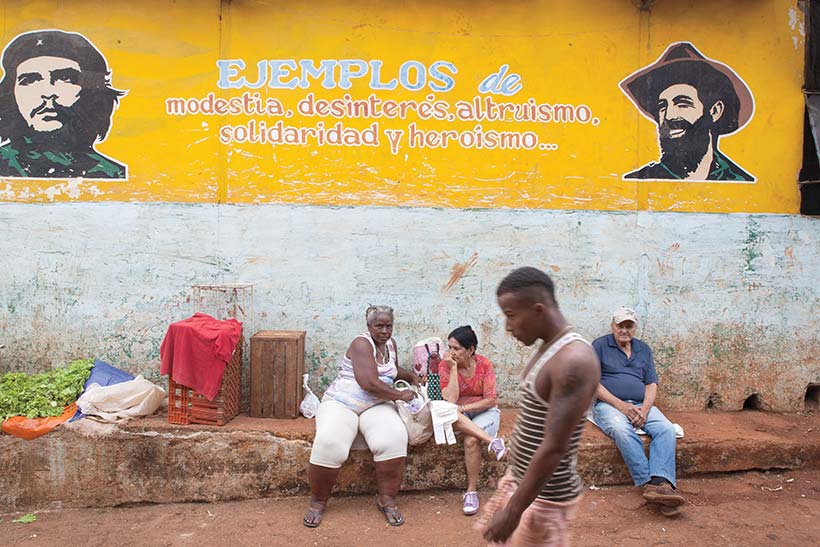
“I realized that politics doesn’t tell the whole story,” he says. “The best things about Cuba are all around you, in the lives of the Cuban people. I found a country that was full of art, full of music, full of life, but at the same time full of very complex problems—economic, social, racial.”
Recinos—a double major in political science and economics—spent the Fall 2014 semester in Havana, taking courses on photography, cinema, economics and the history of migration in Latin America. He was struck by the ubiquity of art galleries, theaters and music.
“I struggled with how I was going to deal with living in a politically oppressed country,” he says. “But for most people, the problem is not that they feel repressed. For most Cuban people, the biggest problem is economic: What am I going to do to feed my family? What am I going to do to live a good life?”
Some days there was no coffee; others, no rice. Artists couldn’t always get paint. “There was always something missing. The water would run out. The lights would go off. Toilet paper—when you go out in Cuba, you can’t find toilet paper. You have to carry your own. On top of that, the average salary of a Cuban worker is not enough to support a family.”
Back at Amherst, Recinos, who is from Guatemala City, took a course on Cuban political extremism with Professor Javier Corrales, whose parents are from Cuba and who has led alumni trips there.
“Going to Cuba reinforced my interest in Latin American politics and made me personally invested in U.S.-Cuba relations,” Recinos says. “I have friends there. I’ve seen the problems they face. And I know the potential that normalizing relations can have on the Cuban people.”